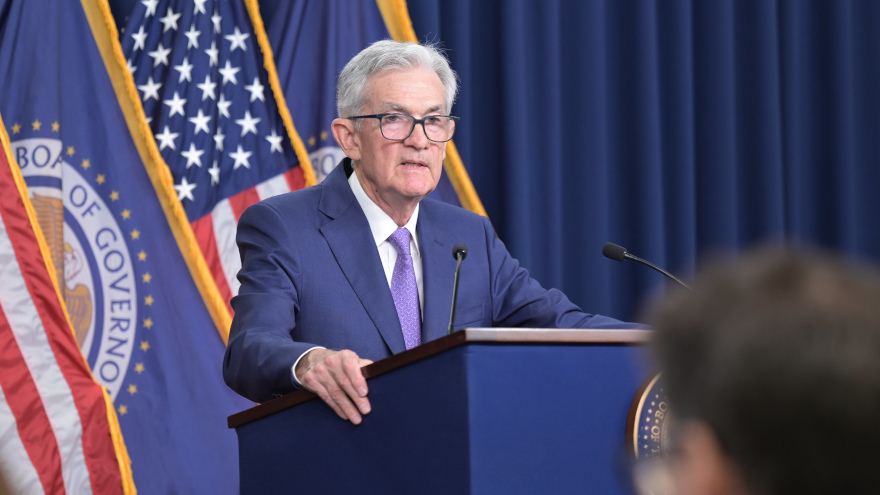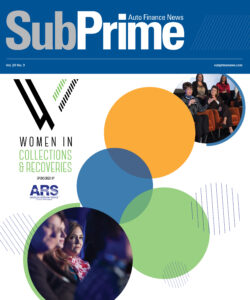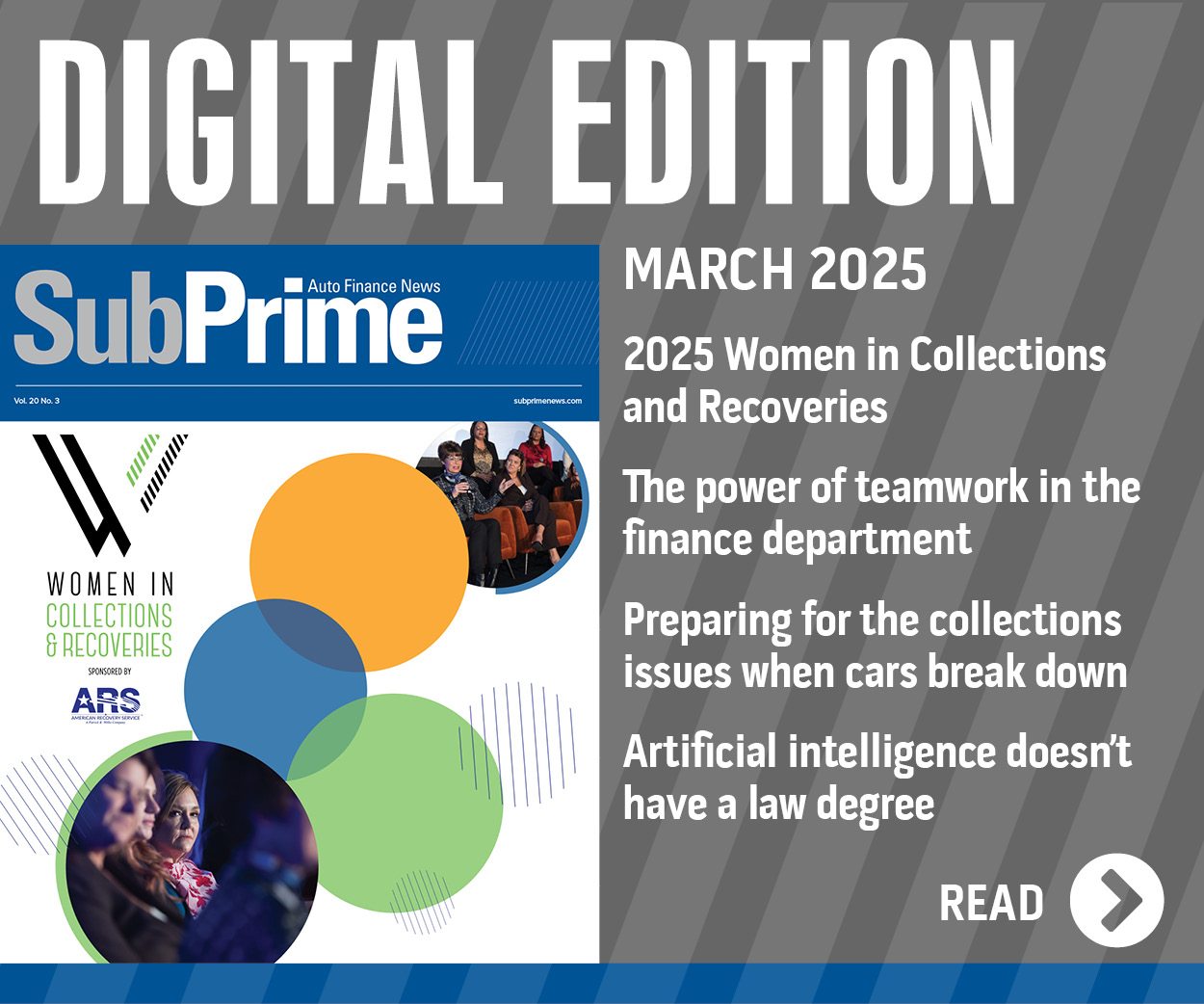Inflation dominates conversation after rates remain unchanged

Federal Reserve chair Jerome Powell answers questions at a news conference on Wednesday in Washington, D.C. Photo courtesy of the Fed.
If you were playing an eating or drinking game based on the number of times policymakers and experts referenced inflation on Wednesday in connection with interest rates holding steady, you would likely have a full belly or an upcoming hangover quite quickly.
The Federal Reserve’s Federal Open Market Committee voted unanimously to keep the federal funds rate at 5.25% to 5.5%. As pointed out by Cox Automotive senior director of economic and industry insights Mark Strand, the Fed hasn’t modified rates since a 25-basis point lift last July.
“These sustained higher interest rates have been a significant financial headwind for mid- to lower-income households over the last year and are impacting demand in rate-sensitive sectors like real estate and autos,” Strand wrote in a blog post following the Fed’s announcement.
“In the retail automotive space sales, both new- and used-vehicle sales volumes are likely at or near their maximum potential until interest rates come down because many buyers with lower credit scores who were able to purchase a vehicle in the low-rate world before 2022 are unable to afford a vehicle at the current rates,” Strand continued.
Fed chair Jerome Powell reiterated again that, “My colleagues and I are acutely aware that high inflation imposes significant hardship as it erodes purchasing power, especially for those least able to meet the higher costs of essentials like food, housing, and transportation.”
And the latest inflation readings aren’t quite to the point where policymakers feel the need to lower interest rates.
The Consumer Price Index (CPI) was flat on a sequential comparison, according to a recap from Comerica Bank chief economist Bill Adams and senior economist Waran Bhahirethan.
Adams and Bhahirethan explained that in year-over-year terms, total CPI slowed to 3.3% from 3.4%, while core CPI slowed to 3.4% from 3.6%, which was the slowest since the middle of 2021.
“We have stated that we do not expect it will be appropriate to reduce the target range for the federal funds rate until we have gained greater confidence that inflation is moving sustainably toward 2 percent,” Powell said on Wednesday during a press conference after the FOMC’s announcement. “So far this year, the data have not given us that greater confidence.
“The most recent inflation readings have been more favorable than earlier in the year. However, there has been modest further progress toward our inflation objective. We will need to see more good data to bolster our confidence that inflation is moving sustainably toward 2 percent,” Powell said.
“We know that reducing policy restraint too soon or too much could result in a reversal of the progress we have seen on inflation,” he continued. “At the same time, reducing policy restraint too late or too little could unduly weaken economic activity and employment. In considering any adjustments to the target range for the federal funds rate, the committee will carefully assess incoming data, the evolving outlook, and the balance of risks.”
A distant second in Wednesday’s discussion was the labor situation, which had differing views of its current status.
“In the labor market, supply and demand conditions have come into better balance,” said Powell, who cited federal data that indicated the labor market added 218,000 jobs in both April and May.
“Overall, a broad set of indicators suggests that conditions in the labor market have returned to about where they stood on the eve of the pandemic — relatively tight but not overheated. FOMC participants expect labor market strength to continue,” he added.
Meanwhile, private sector employment increased by 152,000 jobs in May and annual pay was up 5.0% year-over-year, according to the May ADP National Employment Report produced by the ADP Research Institute in collaboration with the Stanford Digital Economy Lab.
The ADP National Employment Report is an independent measure and high-frequency view of the private-sector labor market based on actual, anonymized payroll data of more than 25 million U.S. employees.
“Job gains and pay growth are slowing going into the second half of the year,” ADP chief economist Nela Richardson said in a news release. “The labor market is solid, but we’re monitoring notable pockets of weakness tied to both producers and consumers.”
So, if the economy doesn’t become too ill like someone who overdid it with that eating or drinking game, might the industry benefit from a rate cut? The Fed’s next opportunity to trim the rate comes on July 31.
Here is what Adams and Bhahirethan are projecting.
“The clearest trend in recent CPI reports is a continued slowdown of core inflation, which in annual terms pulled back in May to the least in over three years. But its path lower has been a bumpy one, interrupted by several hotter-than-expected inflation reports in the opening months of 2024,” they said in their analysis.
“Following the Fed decision and the cooler-than-expected CPI report, Comerica is maintaining its forecast for the Fed to begin reducing the federal funds rate with a quarter percentage point rate cut in September, followed by a second cut in December,” Adams and Bhahirethan continued. “But the decision between one or two cuts will be a close call, and a slim majority of FOMC members think one cut by year-end would be more appropriate than two. However, the members favoring two cuts are probably a majority of the FOMC’s voting membership, since only a minority of the regional fed presidents vote in each meeting, and they tend to be leerier of rate cuts than the Fed governors.”
Strand closed his commentary with these thoughts.
“Interest rates are also vexing dealers. Retailers are feeling pressured by lower sales volumes and lower profitability as big increases in inventory floorplanning costs, also interest-rate driven, eat away at profit margins,” Strand said. “In the most recent Cox Automotive Dealer Sentiment Index, released earlier this month, franchised and independent dealers alike pointed to high interest rates as the No. 1 factor holding back business.
“The vehicle market will remain relatively range-bound until we start to see interest rates finally move materially lower. Welcome to the waiting game,” he concluded.

 View The Latest Edition
View The Latest Edition

